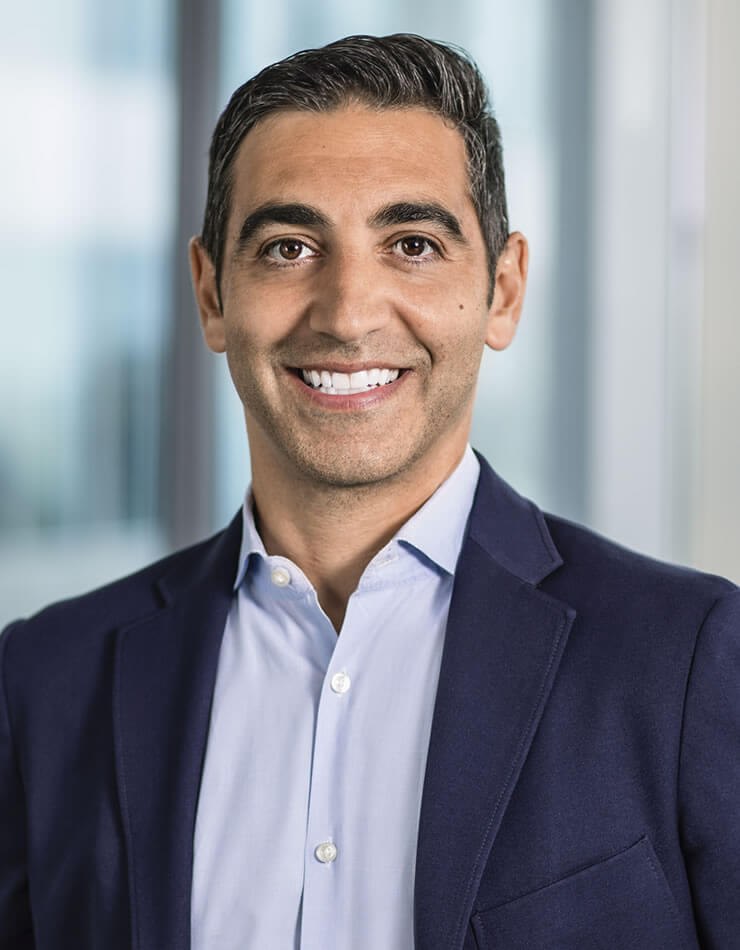Oakmark Equity and Income Fund – Investor Class
Average Annual Total Returns 12/31/23
Since Inception 11/01/95 9.59%
10-year 6.70%
5-year 10.00%
1-year 17.34%
3-month 9.95%
Expense Ratio: 0.83%
Expense ratios are from the Fund’s most recent prospectus dated January 28, 2023; actual expenses may vary.
Past performance is no guarantee of future results. The performance data quoted represents past performance. Current performance may be lower or higher than the performance data quoted. The investment return and principal value vary so that an investor’s shares when redeemed may be worth more or less than the original cost. To obtain the most recent month-end performance data, view it here.
Looking back…
In 1995, I had the good fortune of being given the opportunity to manage a new mutual fund, the Oakmark Balanced Fund, since renamed Oakmark Equity and Income. And now, as my retirement approaches, it is time to review how we did, what we got right and a few that we missed.
Beginning with the positives, we created this Fund believing that a value-based balanced fund could generate equity-like returns but with less volatility than a pure equity product, and this has been accomplished: the annualized rate of return over the Fund’s 28+ year life is 9.6% as of 12/31/2023, very similar to equity indexes for the period. We also believed that by creating the Fund with a dynamic rather than static asset allocation we could add value. As examples, we reduced the Fund’s equity allocation ahead of the 2008 market downturn while increasing the weight to maximum levels to take advantage of favorable market conditions in 2013 and 2021. Recognize that these were not typical market-timing decisions—rather, they were based on our assessment of available value opportunities. We also gave the Fund an all-capitalization mandate, and this proved to be advantageous in several periods, especially 2000-2002. Finally, we believed that Harris Associates would continue to hire and develop the talent to support and evolve the Fund as conditions change. In particular, Harris built out a talented fixed income team that has improved the management of the Fund’s fixed income allocation.
We also got some things wrong. We did not foresee that interest rates would spend the first 25 years of the Fund’s life in almost continual decline, bottoming near the zero boundary in the depths of the 2020 Covid-19 panic. In 1995, it was easy to build out the fixed income allocation of the portfolio to produce an income yield of 6%. We incorrectly believed that interest rates would generally be high enough to provide meaningful income support to the Fund while dampening portfolio volatility. Instead, interest rates sank to levels similar to the yield available from equities, sometimes even lower. When interest rates finally began to climb back to historically ordinary levels, prices of both bonds and stocks suffered, and this resulted in balanced portfolios producing meaningful losses. To our credit, we had kept the duration (interest rate change sensitivity) of the Fund’s fixed income holdings very low, which limited the damage. But this challenging period caused investors to question the validity of the 60:40 balanced fund idea. Today, the current interest rate environment offers a wealth of opportunities for our fixed income team to exploit, opportunities that have not been seen for more than 10 years. With bonds producing respectable interest, the Fund’s income generation has the potential once again to become significant.
We also did not foresee how intermediaries would come to dominate investment decisions for individuals. When we incepted the Fund, many investors made investment decisions for themselves, and we especially sought to appeal to those individuals who are themselves value oriented. And we provided a vehicle for investors who did not wish to make their own asset allocation decisions. The world has changed over the past 28 years, however; today we read that advisers make roughly 7/8 of investment choices for individuals. Inserting intermediaries into the decision-making process has tended to reduce our connection to the actual client. One indication of this is the considerable decline in the number of emails we receive from our investors, an unfortunate development, in our opinion.
All in all, I can step away confident that the Fund has served its purpose of meeting the investment needs of those who include it as part of a portfolio of funds as well as for those who use it as a complete investment program. And I have complete confidence in the remaining portfolio management team. Colin Hudson has been co-manager for more than 10 years. Alex Fitch and Michael Nicolas joined the team more recently but have served as leading security analysts supporting the Fund with their ideas. Adam Abbas leads our fixed income team, which is very busy taking advantage of the more attractive interest rate structure. I have greatly enjoyed working with these gentlemen as well as their predecessors Edward Studzinski, Matt Logan and Edward Wojciechowski. As well, I thank everyone at Harris Associates who has worked to support the Fund managers in too many ways to count. And finally, I thank our Fund investors, especially those of you who have been with us since the 1990s. I hope that we have met your investment needs with the Oakmark Equity and Income Fund.
Clyde McGregor
Quarterly review and transaction activity:
The Oakmark Equity and Income Fund (“the Fund”) returned 9.95% during the quarter, compared to the 8.92% return of the Lipper Balanced Fund Index. For the calendar year, the Fund’s return is 17.34%, compared to a 13.92% return for the Lipper Index. We are proud of the fact that since the inception of the Fund in 1995, our compounded annual return of 9.59% has outperformed the Lipper Index by 2.75% per annum. The Fund’s asset allocation ended the quarter with 59% of assets invested in equities and 41% invested in fixed income securities and cash.
The largest contributors to return in the quarter were Bank of America, Capital One Financial, KKR and Ally Financial, while the largest detractors were Charter Communications, BorgWarner, Corteva and Wendy’s. From a sector perspective, financials contributed the most to our total return for the quarter, and none of the sectors detracted from performance. It was also good to see that many of the small- and mid-cap stocks performed well in the quarter. Small- and mid-cap stocks have underperformed large-cap stocks badly in the past decade. The current valuation discounts are near historic highs, and we believe that small- and mid-cap stocks are very attractive. For the calendar year, the Fund’s highest contributing securities were Alphabet, Amazon, KKR and Ally, while the biggest detractors were Sealed Air, Wendy’s, Corteva and Glencore. After struggling in 2022, most technology stocks rebounded strongly, and Alphabet and Amazon had very good years. The underperformers were a varied lot, with the most common trait being that most are small- and mid-cap stocks.
Our fixed income investments also had a strong quarter, up 7%, and contributed meaningfully to the Fund’s return. Although interest rates declined in the quarter, the overall yield of the fixed income portfolio is still around 5%, well above the past decade. We are excited that the fixed income portfolio can once again produce reasonable income for our investors. To read more about the fixed income performance, please read the Oakmark Bond commentary as the portfolios are very similar.
As always, we take into consideration the tax efficiency of the Fund to help maximize after-tax returns. As a result, the Oakmark Equity and Income Fund made no annual capital gains distributions in 2023.
Transactions
We added one new position, Phillips 66, during the quarter. Phillips 66 is an integrated downstream energy company that operates refineries, pipelines, chemical manufacturing plants and retail gas stations. Like most U.S.-based oil refiners, Phillips 66 is currently earning abnormally high margins thanks to today’s tight market for refined products, like gasoline, diesel and jet fuel. Many investors worry these margins are unsustainable and assign refiners low P/E multiples as a result. Indeed, Phillips 66, Valero Energy Corp. and Marathon Petroleum Corp. all trade for around 9 times next year’s EPS. Unlike other refiners, though, the majority of business value at Phillips 66 comes from its other segments, which provide a more stable base of cash flow. Even if refining margins return to historical levels, we believe we are paying a single-digit multiple of normalized earnings for this collection of advantaged businesses. We believe this is an attractive price for a solid business where management is pursuing shareholder-friendly policies, like cost-cutting and capital return.
We sold three positions during the quarter: Oracle, Parker-Hannifin and Veralto. Both Oracle and Parker-Hannifin were successful investments that had strong performance years and were trading near their sell targets. Veralto is a spin-off of Danaher and technically was never owned by the Fund as a stand-alone entity. We sold Veralto in the when-issued market as it was trading well over our sell target.
As always, we thank our fellow shareholders for investing with us in the Oakmark Equity and Income Fund.
The securities mentioned above comprise the following preliminary percentages of the Oakmark Equity and Income Fund’s total net assets as of 12/31/23: Ally Financial 1.8%, Alphabet Cl A 2.9%, Amazon.com 1.4%, Bank of America 2.9%, BorgWarner 1.2%, Capital One Financial 1.9%, Charter Communications Cl A 2.1%, Corteva 0.9%, Danaher 0.6%, Glencore 2.1%, KKR 1.6%, Marathon Petroleum Corp 0%, Oracle 0%, Parker-Hannifin 0%, Phillips 66 1.1%, Sealed Air 0.5%, Valero Energy Corp 0%, Veralto 0% and Wendy’s 1.2%. Portfolio holdings are subject to change without notice and are not intended as recommendations of individual stocks.
The information, data, analyses, and opinions presented herein (including current investment themes, the portfolio managers’ research and investment process, and portfolio characteristics) are for informational purposes only and represent the investments and views of the portfolio managers and Harris Associates L.P. as of the date written and are subject to change and may change based on market and other conditions and without notice. This content is not a recommendation of or an offer to buy or sell a security and is not warranted to be correct, complete or accurate.
Certain comments herein are based on current expectations and are considered “forward-looking statements”. These forward looking statements reflect assumptions and analyses made by the portfolio managers and Harris Associates L.P. based on their experience and perception of historical trends, current conditions, expected future developments, and other factors they believe are relevant. Actual future results are subject to a number of investment and other risks and may prove to be different from expectations. Readers are cautioned not to place undue reliance on the forward-looking statements.
Harris Associates L.P. does not provide tax or legal advice. Please consult with a tax or legal professional prior to making any investment decisions.
Duration is a measure of the sensitivity of the price of a bond or other debt instrument to a change in interest rates.
EPS refers to Earnings Per Share and is calculated by dividing total earnings by the number of shares outstanding.
The price to earnings ratio (“P/E”) compares a company’s current share price to its per-share earnings. It may also be known as the “price multiple” or “earnings multiple”, and gives a general indication of how expensive or cheap a stock is. Investors should not base investment decisions on any single attribute or characteristic data point.
The Lipper Balanced Fund Index measures the equal-weighted performance of the 30 largest U.S. balanced funds as defined by Lipper. This index is unmanaged and investors cannot invest directly in this index.
The Fund invests in medium- and lower-quality debt securities that have higher yield potential but present greater investment and credit risk than higher-quality securities, which may result in greater share price volatility. An economic downturn could severely disrupt the market in medium or lower grade debt securities and adversely affect the value of outstanding bonds and the ability of the issuers to repay principal and interest.
The Oakmark Equity and Income Fund’s portfolio tends to be invested in a relatively small number of stocks. As a result, the appreciation or depreciation of any one security held by the Fund will have a greater impact on the Fund’s net asset value than it would if the Fund invested in a larger number of securities. Although that strategy has the potential to generate attractive returns over time, it also increases the Fund’s volatility.
All information provided is as of 12/31/2023 unless otherwise specified.









